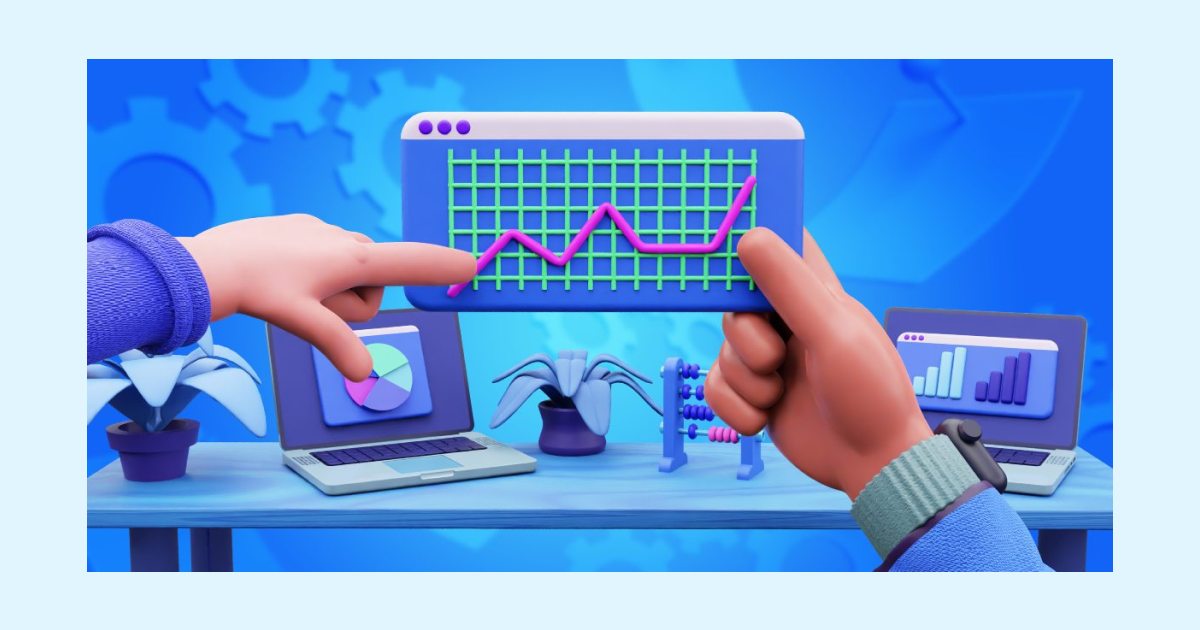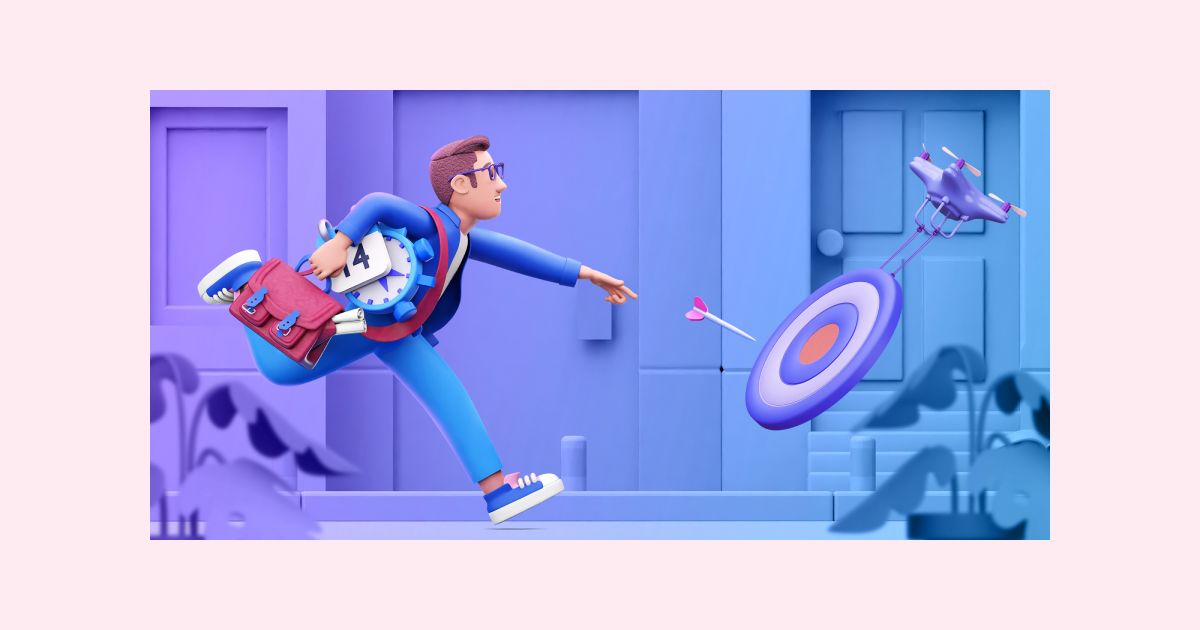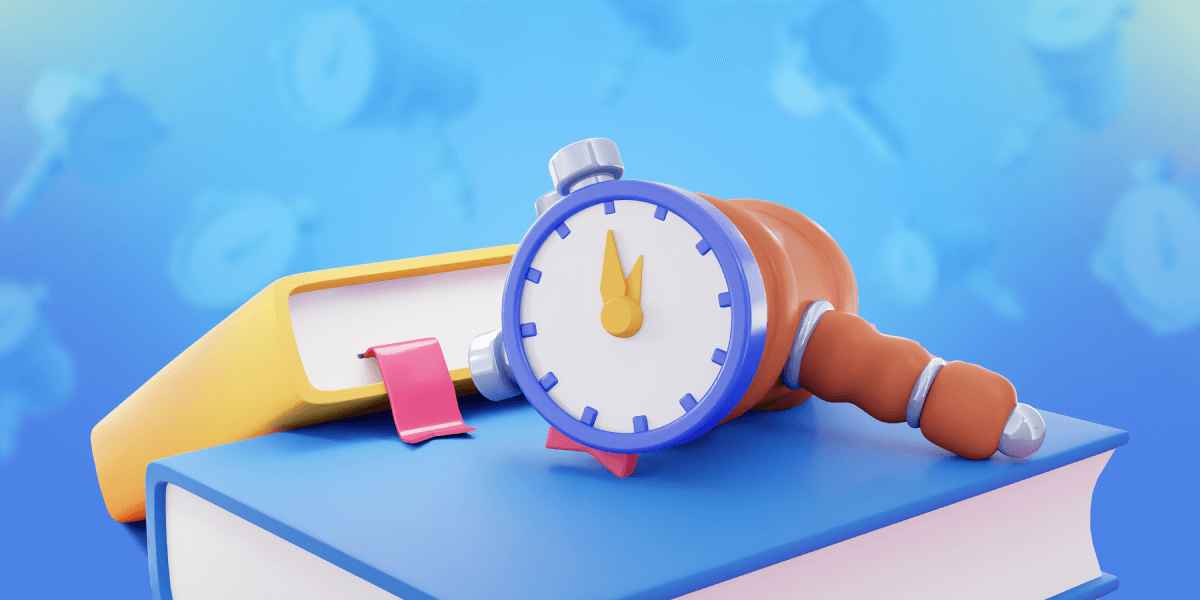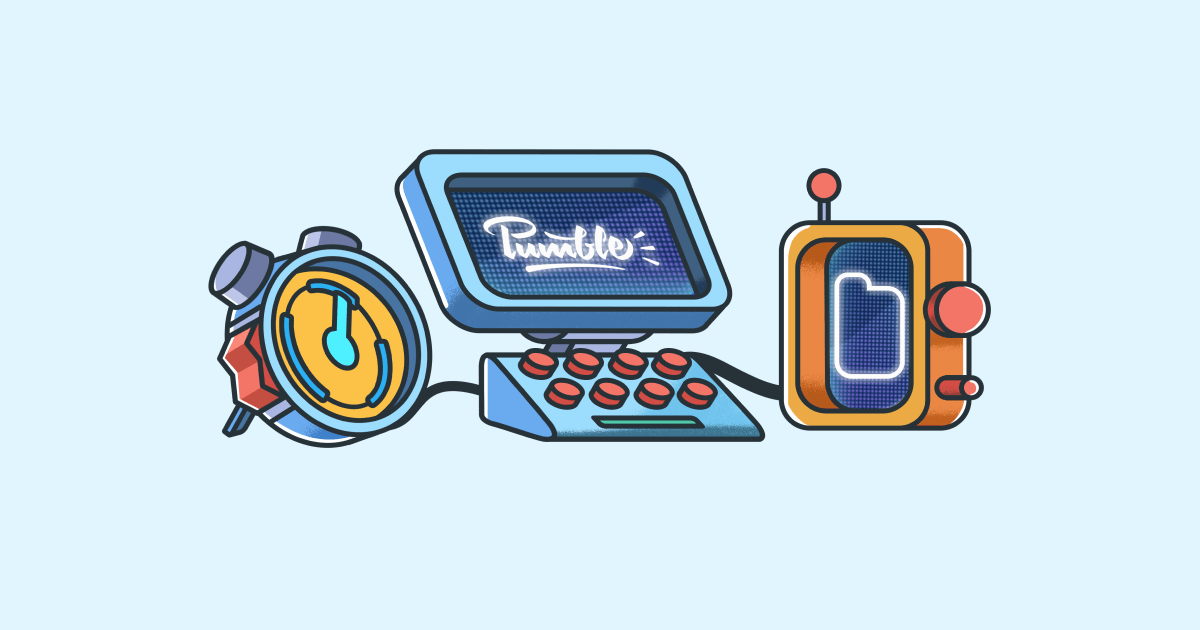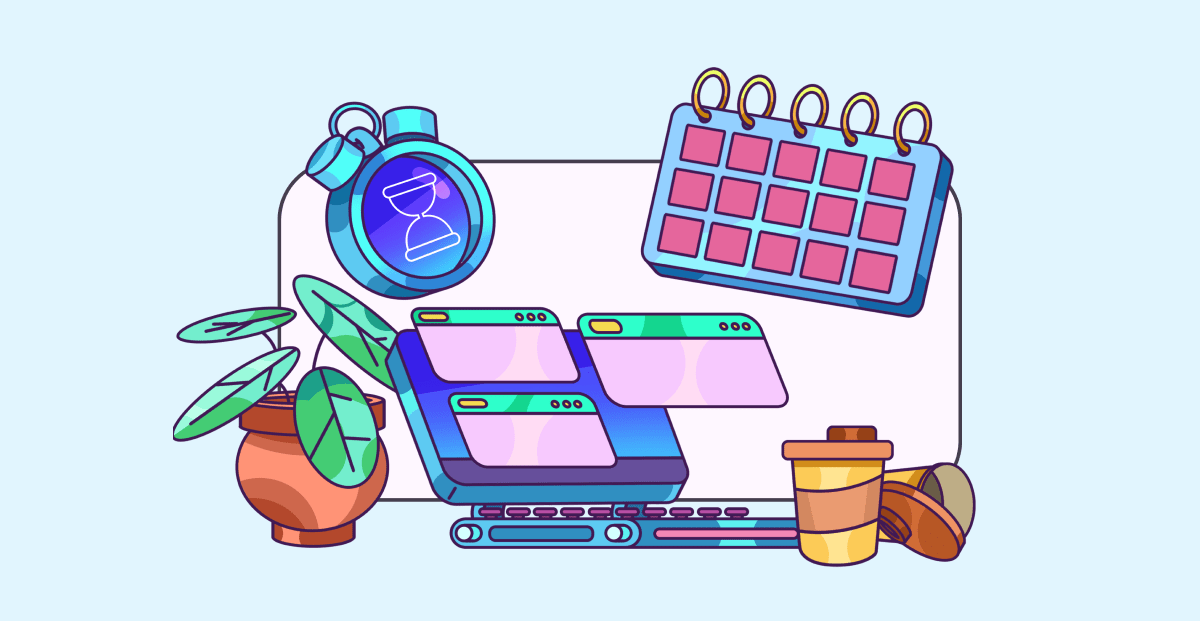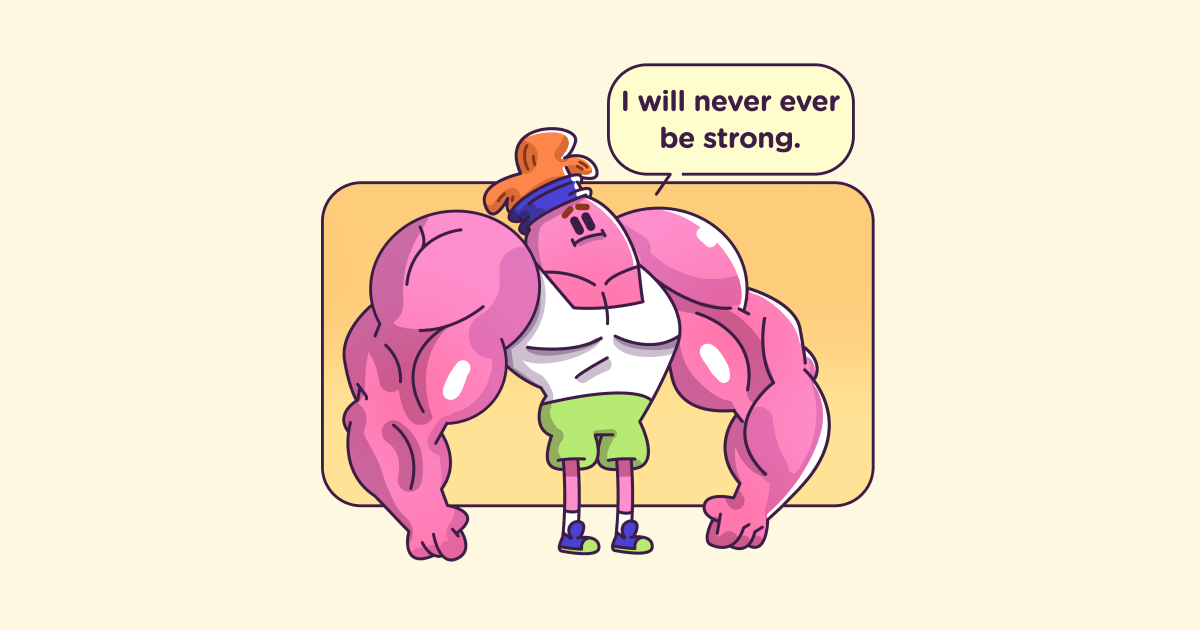Effects of workplace distractions in 2023: Crucial statistics
Last updated on: June 30, 2023
Did you know that, according to a University of California study, we only spend an average of 12 minutes on a task before we’re interrupted? Considering the fact that it takes us more than 25 minutes to return to our task, removing our daily workplace distractions is extremely important
So, today, we’re bringing you insightful workplace distraction statistics. We’ll also explore distractions even further by trying to respond to questions such as:
- What a distraction of attention is,
- Why do we get distracted at work,
- What the most common distractions are, and
- How to deal with distractions in the workplace.
Let’s dive in!
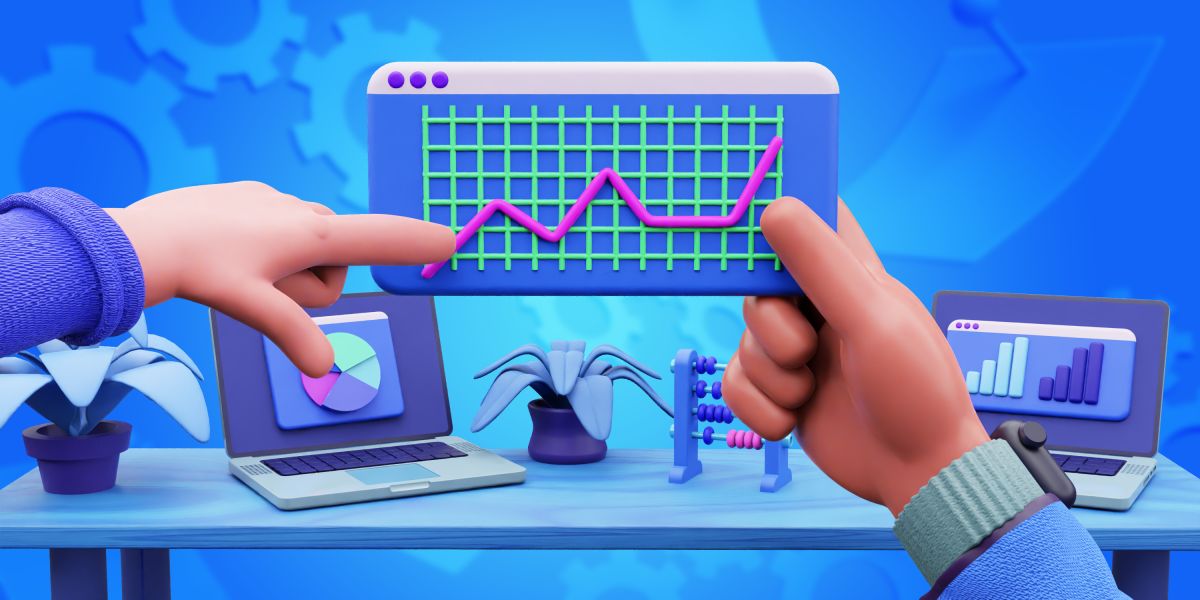
Table of Contents
What is a distraction of attention?
Distraction presents a diversion of our attention away from the task we are performing.
Nir Eyal, the author of the book Indistractable, grouped distractions into 2 types:
- Internal, and
- External.
Internal distractions come from your own mind, and they include:
- Fatigue,
- Illness,
- Personal problems and worries, and
- Daydreaming about what you would rather be doing.
CMO at Supply Gem, Noel Griffith, explained how internal distractions create problems with his writing:

“Internal distractions are things like emotions or gut instincts that we have about the work we’re doing or people who are involved in our projects. For example, if I’m writing an article and I really don’t like one of my sources very much, that could become a distraction because it affects my ability to write with objectivity and neutrality.”
On the other hand, external distractions come from the outside of your mind, and they include:
- Some types of music,
- Phone calls,
- Emails,
- Text messages and notifications,
- Social media news feeds and notifications,
- Anything that can visually distract your attention, and
- The background noise of any kind.
Griffith also struggles with external distractions when writing:

“In my experience, distractions are usually external — they’re things that happen outside the work environment. For example, if I’m writing an article and someone sends me an email asking for help with something totally unrelated to what I’m working on at the moment, that’s an external distraction.”
What is the most common distraction in the work environment?
The biggest workplace distraction is your phone, and research confirms this.
Namely, a survey conducted by CareerBuilder shows that 55% of people believe their cell phone is their largest distractor. Other common distractions at work include:
- The Internet: 41%,
- Gossip: 39%,
- Social media: 37%,
- Co-workers dropping by: 27%,
- Smoke breaks or snack breaks: 27%,
- Emails: 26%,
- Meetings: 24%,
- Noisy co-workers: 20%, and
- Sitting in a cubicle: 9%.
Another survey explored what kind of interruptions a distracted worker faces on a daily basis. The research was conducted by Poly, and it covered 5,150 workers working at least 3 days a week.
According to the survey, most office interruptions come from co-workers. Here are the specific examples of common workplace distractions:
- Co-workers talking loudly over the phone,
- Co-workers talking nearby,
- Phone rings, alerts, and notifications,
- Office celebrations such as birthdays and retirement parties,
- Nearby group meetings,
- Children visiting your co-workers,
- Team games that involve the entire office,
- Family members, other than children, visiting your co-workers,
- Table games such as tennis or football,
- Pets in the office,
- Outside noise, such as car sirens, landscaping work, or dogs barking,
- A colleague eating,
- The sound of the heating or air conditioning system,
- The sound of the copy machine or printer, and
- The sound of coffee being made.
Why do I get so distracted at work?
The reason behind the “success” of a distraction may lie in your lack of ability to pay attention. People suffering from a chronic condition or dealing with anxiety, stress, or even hunger may struggle with maintaining focus.
Another reason may be the lack of interest in your desired area of focus. Boring, menial tasks may trigger such an effect, but also any type of task you are not naturally inclined to or interested in.
Lastly, seemingly irresistible distractions around you could make it difficult to maintain focus.
Since it’s hard to pinpoint the exact reason why we get distracted, we contacted people from various industries to ask for their thoughts.
For Sanket Shah, Director and founder of The Opal, boredom and lack of motivation are the main reasons why we get distracted at work:
“People can easily get distracted at work because of boredom with their job duties or just a lack of motivation related to their current role within your company. Some people may find themselves feeling overwhelmed by too much information coming in all at once which makes it difficult for them to stay attentive and productive throughout their shift hours.”
Moreover, Sales and Marketing Executive at HunterHennessy Consulting LLC, Amy J. Keely, blames modern-day technology for being distracted:

“Today, the convenience and compulsiveness of using smartphones have rewired the brain’s neuro-net in ways that impact the way humans think and operate. It’s like people have become so distracted by shiny objects that catch their immediate attention and move their focus from the task at hand.”
To sum up, we can get distracted, mostly by technology, when the work we perform is not engaging enough or we don’t feel motivated during the day.
How do distractions affect productivity?
As many as 79% of workers feel distracted during a workday. Moreover, 68% of people don’t believe they have enough uninterrupted focus time during their day.
Distractions lead to productivity loss.
A recent study on the influence of distractions when working from home showed that employees who worked in spaces full of distractions were much less productive and concentrated.
On the contrary, workers experiencing lower levels of distractions had higher levels of concentration and felt more productive, engaged, and satisfied at their job.
If you’re looking to put a price tag on this productivity loss, the average numbers are already there — reports show that American businesses lose as much as $650 billion per year due to workplace distractions.
Employees also recognize the detrimental effects of distractions on productivity, as their responses from a 2018 workplace distractions report by Udemy show that:
- 54% of workers believe they “aren’t performing as well as they should,”
- 50% of employees think they “are significantly less productive,” and
- 20% of workers believe they are “not able to reach full potential and advance in their careers.”
How do distractions affect memory?
According to a 2016 study made by researchers from Simon Fraser University, the likelihood of falling prey to distractions may be linked to our working memory capacity.
In fact, researchers have shown that better memory leads to a higher ability to avoid distractions.
Namely, people who performed well in memory tasks within the study (indicating they have higher working memory capacity) proved more efficient in suppressing distractions.
In contrast, poorer memory leads to a lower ability to avoid distractions.
Participants who performed poorer in memory tasks within the study (indicating they have lower working memory capacity) usually failed to surpass distractions fast enough to stop them from grabbing their attention.
But, how do distractions affect our memory?
Well, many newer studies found that distracting conditions don’t have any effect on memory.
For instance, the study Distracted, Stressed, and Confused: The Effects of Distraction and Stress on Memory Retention showed that both distracted and non-distracted students achieved the same results and showcased the same level of performance.
In addition, another study published in Psychophysiology found that distractions (in this case in the form of different colors) have no effect on working memory. Interruptions (active response to a distraction), on the other hand, do. The study showed that interruptions affect the quality of the tasks we’re performing and make us less efficient.
💡 Clockify Pro Tip
Looking for efficient ways to improve your memory? Check out this blog post:
How do workplace distractions affect different generations?
Funnily enough, distractions may not affect all generations in the same way. This is tied to how different generations are wired to work and focus in the first place.
A crucial difference between the generations is the level of noise they are capable of putting up with when they want to focus on work. Data from a Poly study we mentioned shows that:
- 52% of Gen Z are the most productive in a noisy environment or when talking with someone, while
- 60% of Baby Boomers need complete silence to work.
Even so, members of Gen Z are still more capable of dealing with distractions when they do divert their attention than Baby Boomers — as much as 35% of Gen Z use headphones to block external noise, while only 16% of Baby Boomers do the same.
Moreover, Gen Z and Millenials are also more likely to accept a working arrangement that implies more noise. When asked whether they would work in an open-plan office, answers were relatively different based on the age group. Here’s the percentage of respondents open to working in this kind of environment:
- 56% of Millennials,
- 55% of Gen Z,
- 47% of Gen X, and
- 38% of Baby Boomers.
Thus, if you’re an employer looking to remove distractions from the office, you should do your best to accommodate different generations working at your company.
How do people deal with distractions in the workplace?
We already talked about how different generations view distractions. However, certain claims from the same research by Poly eradicate these differences.
Namely, nearly 3 out of 4 people would be more willing to work in an office environment if employers would make the effort to reduce workplace distractions.
The previously mentioned Udemy research explored the possible benefits of reducing distractions. Based on the responses from employees, here are the biggest perks of reducing workplace distractions:
- 75% claim it would increase productivity,
- 57% believe it would bring more motivation,
- 51% would have higher confidence in job performance,
- 49% would be happier at work, and
- 44% believe they would produce a higher quality work output.
More than 5 out of 10 people believe the problem of workplace distractions could be solved through:
- Designated quiet spaces and zones located throughout the office,
- Clear guidelines defining appropriate noise levels, and
- Changing the office layout.
In addition, a 2019 Workplace Acoustics Study showed that 62% of workers in the US, UK, and Australia believe that minimizing distractions in their office is essential for conducting business. The study found that employees believe distractions are mainly making them less productive and creative.
Thus, it’s crucial to take steps to better handle and stop distractions.
Statistics about the most common work-related distractions
Even work can distract you from your other, more important work. Work-related distractions include:
- Meetings,
- A constant flood of emails, and
- Various tasks you perform at the same time.
In addition, micromanagement-prone managers (no matter how well-meaning they may be) and strict office policies may further hinder productivity at work and serve as their own distractions.
Here are some eye-opening statistics on some of the most common distractions at the workplace.
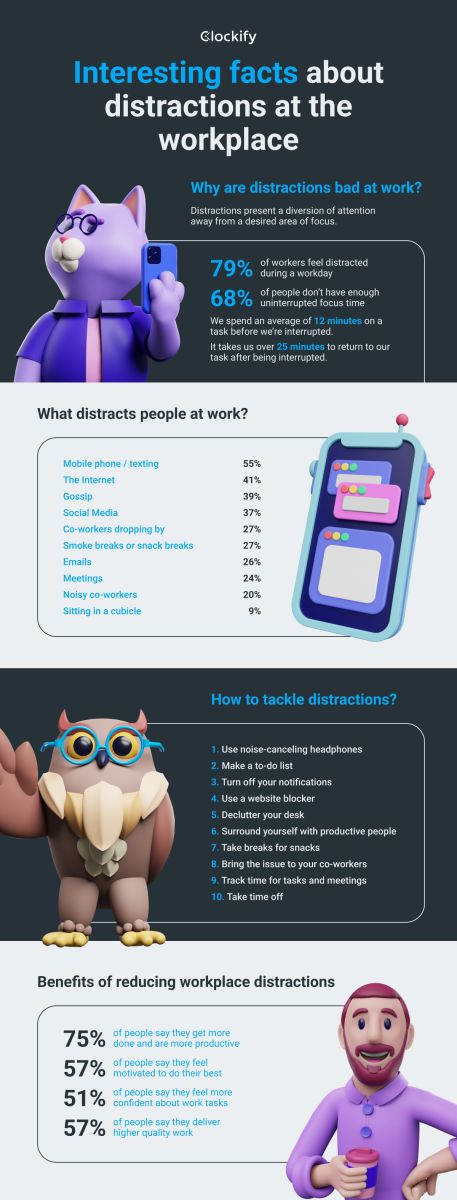
Having too many meetings
An Atlassian survey on wasting time at work shows an average employee loses about 31 hours per month in meetings. As a matter of fact, people believe that they waste time in half of the meetings they attend.
Research by Microsoft shows that 25% of people spend 7.5 hours in meetings each week. The same research reports that inefficient meetings are the number 1 disruptor of employee productivity.
Another recent study by the MIT Sloan School of Management showed that reducing the number of meetings by 40% leads to:
- A 71% increase in productivity, and
- A 52% increase in satisfaction.
What’s more, reducing the number of meetings by 60% leads to:
- A 55% increase in cooperation, and
- A 57% decrease in the risk of stress.
Managers prone to micromanagement
You can’t exactly focus on your work if you are constantly being interrupted by a manager checking whether you are working properly.
In fact, a survey published in Harry Chambers’ paper My Way or the Highway showed that as much as 79% of employees have experienced micromanagement. This, in turn, prompted 69% of them to want to change their jobs, and 36% to actually change their jobs.
Trying to follow strict office policies
Having to arrive at work at a precise time can lead to a lot of stress and anxiety. For instance, commuting through heavy traffic to get to work on time every day can only add to this stress.
Now, these may not seem like classic distractions. Yet, stress can lead employees to become less attentive at work, and more likely to fall prey to other, more concrete distractions.
In fact, the Research Journal of Social Sciences & Economics Review published a study in 2022 that showed a correlation between job stress and employee performance. It reported that stress among workers directly affects the productivity levels of that individual and the whole organization.
So, anything that causes stress may be a great catalyst for low productivity and focus, and strict office policies fall under this.
A constant flood of emails
According to Radicati estimates, 347.3 billion emails are sent and received daily in 2023. That’s 4.2% more than in 2022. So, people around the world are spending more and more time each day on emails.
What’s more, Microsoft research shows that employees who use email the most, which is the top 25%, spend 8.8 hours on emails every week!
Trying to multitask
Logic may imply that multitasking involves working on several tasks at once and finishing your work faster. But, in truth, these tasks that you are “multitasking” on can only serve as distractions when compared to one another.
Performing more than one task at a time, especially if they’re complex tasks, takes a toll on productivity.
That doesn’t come as a surprise as only about 2% of the population is actually capable of multitasking successfully, with as much as 98% just switching between several tasks in short successions.
Moreover, studies suggest that multitasking actually makes your productivity drop by 40%. It also increases your stress levels and even makes you temporarily lose as much as 10 IQ points.
In addition, according to a systematic review published in the Journal of Social Research Development, multitasking may accelerate the process of completing tasks in the beginning.
However, after some time your overall performance will decrease. Moreover, you’re more likely to produce lower-quality work due to divided attention and poorer memory.
💡 Clockify Pro Tip
Looking for ways to get more things done without becoming less productive? Check out these tips:
Tips on how to handle work-related distractions
Regardless of whether you’re an employer looking to add more focus to their workplace or an employee wanting to remove interruptions at work, these tips will help you handle work-related distractions.
Tip #1: Introduce “no-meeting” days
The MIT study showed that having meeting-free days can actually increase productivity and employee satisfaction. The study also highlights that companies should have at least 3 meeting-free days during a working week for optimal employee performance.
Tip #2: Set a clear agenda for each meeting
Microsoft research reported that finishing off a meeting on an unclear note disrupts employee productivity. In fact, 56% of workers find it hard to summarize what happened in a meeting, which makes the meeting itself less productive.
So, each scheduled meeting should have a clear and concise list of matters it will cover.
Moreover, everyone involved should be familiar with the agenda. That way, the team will have enough time to think about the questions and concerns they want to raise and avoid wasting time during or after the meeting.
💡 Clockify Pro Tip
Making sure your meetings are effective is among the easiest ways to keep workers engaged. Here’s how to improve the quality of your meetings:
Tip #3: Avoid micromanaging your teams
By giving your teams more space to work, you will decrease their stress levels.
You will also give them larger stretches of time to focus on their work and figure out suitable solutions on their own through deep, uninterrupted work. If they have any questions or concerns, let them come to you.
Tip #4: Introduce flexible working hours
As we mentioned, strict office policies can increase stress among employees which makes them more prone to distractions. As an employer, you could try to mitigate that by offering more flexibility. For instance, you could move to a more flexible working schedule.
You can issue a policy that requires employees to work anytime from 8 a.m. to 8 p.m., as long as they work for 8 hours in total per day.
Alternatively, you could define approximate arrival times (e.g., anytime from 8 a.m. to 11 a.m.) and have employees work 8 hours from the moment they arrive.
To make sure your employees are fulfilling their norms, you can introduce a Clockify Time Clock Kiosk. It will help you easily track your employees’ work hours, attendance, and breaks.
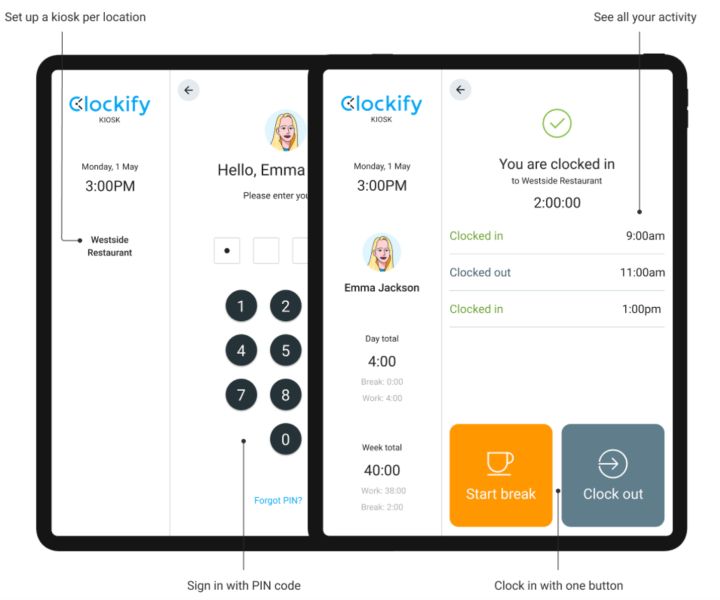
Tip #5: Offer a work-from-home arrangement
According to a Forbes’ piece on the impact of remote work on mental health, employees who work remotely enjoy various benefits such as:
- Fewer distractions,
- More time with family,
- More opportunities for leisure time, and
- A better work-life balance.
What’s more, workers can save $4,000 each year on clothing, food, parking, gas, and car maintenance.
Thus, you may want to explore remote business management practices and consider offering a more flexible working schedule to your employees. There are great work-from-home apps that allow you to stay in touch with your team. You could even try out some of our methods for building trust in a remote workplace, in case you’re concerned about the lack of face-to-face interaction.
💡 Clockify Pro Tip
Is your company switching to a remote working schedule? Check out the best work-from-home tips:
Tip #6: Manage email notifications
You can turn off the browser notifications you’re getting for each email you receive. Moreover, try to avoid checking your inbox at random.
Instead, schedule fixed time periods to check your inbox and respond to emails. For example, you can set aside some morning hours (e.g., from 8:00 a.m. when you arrive at work to 8:30 a.m.) and some afternoon hours (e.g., from 3:30 p.m. to 4:00 p.m. before you finish work for the day). Once you’ve defined your email schedule, make sure you stick to it.
💡 Clockify Pro Tip
If you believe your emails are not as efficient as they can be, you may want to check out pro advice from Patty Kreamer on email productivity:
Tip #7: Make a list of tasks you have to do each day
Creating a to-do list for each working day is among the best time management tips you’ll find. This habit also helps you avoid multitasking.
So, try to stick to working your way down your to-do list and focus on one task at a time.
→ Note: Some of these tips apply to managers who have the option to change the way they approach their team and project management, to help their teams be less distracted and more focused on their tasks. Certain tips apply to employers who have the power to make appropriate changes to their company’s office policies.
Statistics on distractions in noisy offices
The previously mentioned Workplace Acoustics Study found that 55% of offices in the UK, US, and Australia are described as noisy. In addition, 69% of employees claim noise has a big negative impact on their concentration.
Moreover, the aforementioned study on the influence of distractions on mental health during the COVID-19 pandemic shows that office-related noise intensifies the level of distractions at the workplace. That’s because background noise increases the “mental demand on employees,” causing them to be less productive.
To make matters worse, a recent Poly study on the evolution of the workplace after COVID-19 showed that working from home has further lowered our noise tolerance levels.
In fact, 56% of study participants believe that noise now makes them less productive.
Noise that may distract you while you work could include:
- Noisy co-workers,
- Office noise,
- Outside noise, and
- Pets in the office.
Noisy co-workers
The previously mentioned Plantronics, Inc research shows that noisy co-workers present a major workplace distraction. As a matter of fact:
- 75% of workers believe co-workers talking loudly over the phone is the number 1 distraction, and
- 65% of research participants see co-workers talking nearby as the second most distracting noise.
The study by Poly on the evolution of the workplace adds even more perspective to this issue. About 60% of study participants believe they’ll become annoyed or angry if their noisy co-workers disturb them.
Office noise
Office noise is another noise that may challenge your ability to focus in the workplace.
Research shows that high noise levels are among the main reasons we’re distracted at work. The researchers have also found high noise levels to have a big impact on employees’ productivity and well-being.
Depending on your office and where you are stationed, distractions could include the sound of the heating or air conditioning system or the sound of the copy machine or printer. For some people, the sound of coffee being made can also be a big distractor.
Family members and children visiting the office
According to data by YouGov, 38% of Americans named distractions from household members as the biggest challenge during their work-from-home period. Thus, it’s safe to say that your co-workers’ family members dropping by the office could distract you from your work.
Your co-workers could have their family members come by the office for various reasons.
Sometimes, they’ll want to drop off something, pick something up, or say a quick hello. Other times, they could even bring their kids to the office.
If these visits happen unexpectedly, they may be an even bigger distractor.
Outside noise
Outside noise that may distract you includes car sirens, landscaping work, construction work, dogs barking, or any kind of commotion coming from the outside.
These unavoidable (and usually unmanageable) interruptions can be especially distracting when you’re having an important call with a client, trying to helm a meeting, or holding a PowerPoint presentation.
Pets in the office
More and more offices around the globe are becoming pet friendly. For most people, the biggest distraction-related factor pets pose is their cuteness factor — a lot of people cannot walk past a cute puppy or kitten without going over to pet them.
Of course, people may also find other factors distracting, as shown in one study by Eastern Kentucky University:
- Meowing/barking (reported by 25% of cat owners and 19% of dog owners),
- Fur/hair problems (reported by 32% of cat owners and 9% of dog owners), and
- Cleanliness issues (reported by 24% of cat owners and 9% of dog owners).
Moreover, a case study from 2021 on dogs at the workplace shows that dog owners always have to give a certain amount of attention to their pets, which can affect productivity at work. Furthermore, 20% of workers without dogs believe pets at work would reduce their productivity.
On the upside, some studies showed that pets, specifically dogs, may not be such a distraction.
For instance, a study published in Anthrozoös on perceptions of dogs in the workplace showed that only 3.3% of people felt dogs in the office would be distracting. In addition, about 3.3% of employees think dogs in the workplace could be a distraction to their colleagues.
In addition, the previously mentioned Eastern Kentucky University study also showed what employees think about having pets in the office:
- Pets relieve stress for 29% of cat owners and 21% of dog owners,
- They make the office more friendly for 21% of cat owners and 18% of dog owners, and
- Pets provide a positive diversion for 19% of cat owners and 9% of dog owners.
Tips on how to handle noise in the workplace
Noise in the workplace is often out of our control. But that doesn’t mean we can’t do anything about it!
Let’s take a look at what you can do to avoid getting distracted by the office noise.
Tip #1: Use headphones
You can use headphones to listen to music or opt for white noise to maintain your focus.
Now, music has already been listed as an external “distractor,” but, in truth, this only applies to certain kinds of music.
For example, music with lyrics is more likely to distract you from certain tasks. On the contrary, you can’t go wrong with instrumental pieces, even game soundtracks.
Tip #2: Use a microphone
You can use a microphone that absorbs and removes background noise for client calls. This will ensure that at least your client is spared the noise from the construction work happening next to your office.
Tip #3: Talk to your colleagues
Your colleagues who talk loudly over the phone or have group conversations nearby may not even be aware they are distracting you.
Politely explain what you are currently working on, and that you would need quiet time to deliver quality work.
Tip #4: Discuss the possibility of a special noise-proof room with your employer
A noise-proof room allows employees to attend client calls and meetings without any disturbance.
Some of the materials and items that can help with sound-proofing a room are:
- Specialized sound blockers,
- A white-noise machine,
- Sound-proof doors and windows,
- Heavy drapes, and
- Sealed cracks and gaps.
Tip #5: Urge your employer to issue an official “noise” policy
If the noise in your workplace is getting too distracting, you can try bringing the issue to your employer.
You could ask them to provide a clear list of official guidelines and rules that detail what type and level of noise are prohibited and when.
Statistics on distracting co-worker interruptions
You’re already familiar with the stat that co-workers are a major distraction for one-fifth of the workforce. According to a survey José Luís González Rodriguez from ActionCOACH conducted at her company, 25% of employees are interrupted by meaningless co-worker interactions from 1 to 5 times per day.
Moreover, a study from the University of California we mentioned shows that workers reported much higher stress levels, frustration, and pressure after just 20 minutes of interrupted performance.
As co-worker interruptions are common, it’s essential we learn how to manage them.
Tips on how to handle co-workers interrupting you
Maintaining good relationships with your co-workers is important. So is setting boundaries and ensuring that you have a productive workday. These tips should help you avoid co-worker interruptions without coming off as rude.
Tip #1: Learn to politely refuse to chat when in the middle of work
You can politely refuse to chat with a co-worker while you’re focused on a task at work. Your answer should include the following elements:
- A straightforward but polite refusal to engage,
- A brief explanation of why you are not able to chat at that moment, and
- A suggestion of an alternative time when the discussion can take place.
So, if a co-worker wants to chat with you about something, your answer could go like this:
“I’m sorry, I’m currently in the middle of something. Can I get back to you later in the day or tomorrow morning?”
Tip #2: Make your schedule public
In case you have your own office, make it a habit to stick to your schedule detailing what you’ll be working on today (and when) at the front door.
If you work in a cubicle or an open office, you can define your weekly schedule in an online calendar (such as Google Calendar) and then share it with your team. This way, your teammates will be able to see when you might be available for a quick meeting or question.
Tip #3: Wear headphones
Just the fact that you are wearing headphones will send a message to your co-workers that you are deeply immersed in your work and would rather avoid being interrupted at that time.
Statistics on distractions keeping you away from work
Distractions at the workplace could involve the alluring call of activities that are not related to your work. This includes gossiping and otherwise chatting with colleagues or going on prolonged smoke or snack breaks.
Another similar distraction you may encounter at the workplace are fun activities such as office celebrations and team games you’ll find yourself wanting to participate in even when you have a lot of work.
Let’s go over the most common distractions that are not related to work in more detail.
Gossiping and chatting with colleagues
The previously mentioned study conducted by CareerBuilder shows that as much as 39% of respondents cite office gossip as a major distraction from work.
What’s more, 27% of survey participants point out that chatting with colleagues about matters not related to work is another big distractor.
Smoke or snack breaks
Both snack breaks and smoke breaks fall under short breaks. A recent UK survey found that an average smoking break lasts between 5 and 10 minutes. Moreover, over 30% of survey participants claim they spend about 20 minutes of their working day smoking outside.
In addition, a study by Staples provided interesting workplace distractions statistics by exploring the use of snacks at work. It showed that as much as 57% of US workers would leave their offices to buy snacks. These departures from the office cost the US economy 2.4 billion hours in lost productivity!
Yet, you can’t work properly when you’re hungry. The same goes for people who are smokers, for better or for worse (unless you are looking to quit the habit).
So, the best solution is to find alternatives and workarounds for these distractions rather than trying to eliminate them altogether.
Office celebrations and team games
Birthdays, retirement parties, and Secret Santa Soirees are coming back to the offices! A recent survey by Challenger, Gray & Christmas, Inc shows that 56.9% of companies planned on having in-person parties to celebrate the end of 2022.
However, despite the joy, gifts, and great food they usually involve, office celebrations still may distract you from your work.
The same goes for team building activities and games the entire office is expected to participate in.
Tips on how to handle the urge to do something other than work
Maintaining your focus at work while there’s chatter around you may seem unthinkable at times, but with these tips, you’ll easily be able to stay off of distractions!
Tip #1: Keep snacks at hand
Bring a bowl of healthy snacks, place it on your desk, and nibble when hunger strikes.
You can rarely go wrong with nuts, but there are plenty of healthy snacks you can try. Interestingly enough, some snacks are even known to boost productivity!
If you’re an employer looking to remove snack-related distractions from the workplace, you can provide snacks for workers in your office kitchen.
Many companies in the US are already spending $14,813 per month on snacks and beverages. Moreover, as much as 33% of companies are willing to spend even more than that.
Tip #2: Choose a workstation near productive people
Working while surrounded by productive people who don’t engage in gossip or chats all too often may inspire you to follow suit and match their productivity levels.
So, if possible, choose to sit next to a productive co-worker to ensure you’re avoiding additional distractions.
Tip #3: Schedule smoke breaks
Employers can designate specific times of day for smoke breaks.
This way, smokers will feel at ease knowing their next smoke break is scheduled for the near future, so they’ll be more likely to focus on their priority tasks now.
Tip #4: Plan your work ahead
Identify your priorities for the day and start working on them as soon as you arrive at the office. For a better effect, create precise time blocks for these priority tasks in your calendar.
As a result, you’ll be able to organize and schedule your work so that you have enough time to finish your priority work and enjoy activities unrelated to work stress-free.
Tip # 5: Don’t be the last to return to your workstation
Office celebrations range from 15 minutes to several hours, depending on the occasion. But you don’t have to stay longer than you want to or have the time for.
If you have a lot of work on your plate, and can’t possibly finish everything before the celebration starts, then the solution is to limit the time you’ll spend on the celebration.
For example, if you have a lot to finish, you can set a time block for that Secret Santa Soiree for 1 hour. Afterward, you can return to your desk, put on your headphones, and resume work. If luck should have it, you may still finish that urgent assignment before the celebration ends and return to the party.
→ Note: Some of these tips apply to employers who have the power to make these changes within their companies and help their employees be less distracted and more focused on their tasks.
Statistics on tech distractions
As expected, digital distractions in the workplace are a big culprit in eating up the time you should be spending focused on work. Technology distractions in the workplace usually involve:
- Mobile phones,
- The Internet, and
- Social media in all its forms.
Your mobile phone
According to Larry Rosen, a psychology professor and the co-author of the book The Distracted Mind, an average person checks their phone every 15 minutes. The reason behind this is the anxiety-induced impatience that makes us fear we’ll miss out on something if we stop checking our phones regularly.
The most common distractions associated with your smartphone are:
- Personal texts,
- Phone calls, and
- Alerts and notifications from social media and similar apps.
Of course, you may also be tempted to browse the web with your smartphone, wasting even more time in the process.
The Internet
If you’re using your mobile phone to browse the web, the latest research published by Statista shows that you’ll likely spend your time online to:
- Chat and send messages: 73%,
- Send e-mails: 71%,
- Listen to music: 61%,
- Watch videos: 61%,
- Search for products 56%,
- Read news 54%,
- Play video games: 39%, and
- Job search: 24%.
Social media
As of 2022, social media accounts for 38% of the global daily online time, DataReportal reports. We spent 2 and a half hours every day on different social media platforms in 2022. According to a study published in SN Business & Economics, people spend around 40 to 45 minutes of that social media time while they’re at work.
The specific numbers from this study are as follows:
- 15% of people spend 15 minutes on social media at work,
- 24% spend about 30 minutes,
- 13% spend around 45 minutes,
- 11% spend 1 hour,
- 16% spend more than 2 hours on social media at work, and
- 18% denied using social media at work.
The same study showed that 42% of people use social media at work for entertainment, which mostly includes sharing and searching for images and videos.
Furthermore, 36% of study participants believe social media leads them to deviate from work, and 24% believe it’s a waste of office time. Lastly, 57% of respondents believe that social media negatively affects their productivity at work.
How often do different age groups use social media?
According to the DataReportal research, social media is most commonly used by the 16-34 age group, specifically:
- Females spend 41.9% of their online time on social media, while
- Males spend 38.8%.
Social media also accounts for a large portion of the 35-54 age group’s online time. To be specific:
- 37.2% of online time spent on social media for women, and
- 34.7% for men.
When it comes to Facebook, DataReportal reports that the largest percentage of its users belongs to the 25-34 age group: 29.6%. Facebook’s user share by age group goes as follows:
- Users from 13 to 17 years old: 4.9%,
- Users aged 18 to 24: 22.6%,
- Users between 25 and 34 years old: 29.6%,
- Uses aged 35 to 44: 19%,
- Users from 45 to 54 years old: 11.3%,
- Users aged 55 to 64: 7.1%, and
- Users 65 and above: 5.6%.
The same source reports that the largest portion of Instagram’s audience belongs to the 18-24 age group. Here are the specific numbers for each age category:
- Users from 13 to 17 years old: 8.1%,
- Users aged 18 to 24: 32%,
- Users between 25 and 34 years old: 29.6%,
- Uses aged 35 to 44: 15.3%,
- Users from 45 to 54 years old: 11.3%,
- Users aged 55 to 64: 8.2%, and
- Users 65 and above: 4.2%.
Lastly, YouTube’s largest audience belongs to the 25 to 34 age group. Here’s a YouTube user share based on age:
- Users from 18 to 24 years old: 15%,
- Users between 25 and 34 years old: 20.7%,
- Uses aged 35 to 44: 16.7%,
- Users from 45 to 54 years old: 12%,
- Users aged 55 to 64: 8.8%, and
- Users 65 and above: 9%.
Tips on how to handle tech distractions
The previously mentioned study from SN Business & Economics shows that nearly 80% of people believe that there must be an organizational policy regulating the use of social media in the workplace.
If your company doesn’t have one in place, there are still things you can do to limit social media distractions at work.
Tip #1: Manage app notifications
Turn off notifications for your social media platforms and other apps completely, and mute your phone calls and texts when you want to fully immerse yourself in a task.
Tip #2: Schedule phone use
If you can’t mute your phone for the duration of the entire workday, try setting a fixed schedule for checking your device.
For example, you can set an alarm every hour to remind you that it’s time to check your phone. Each time the alarm goes off, set aside 1 minute to go through your messages and other notifications. If you find something important and urgent, set aside 5-10 minutes to deal with it. If not, go back to work once the 1 minute is up, and set your phone aside until the next 1-hour alarm goes off.
For this purpose, you can use the Pomodoro timer in Clockify’s browser extensions. This feature allows you to define the duration of your work sessions and breaks and then set notifications for both.
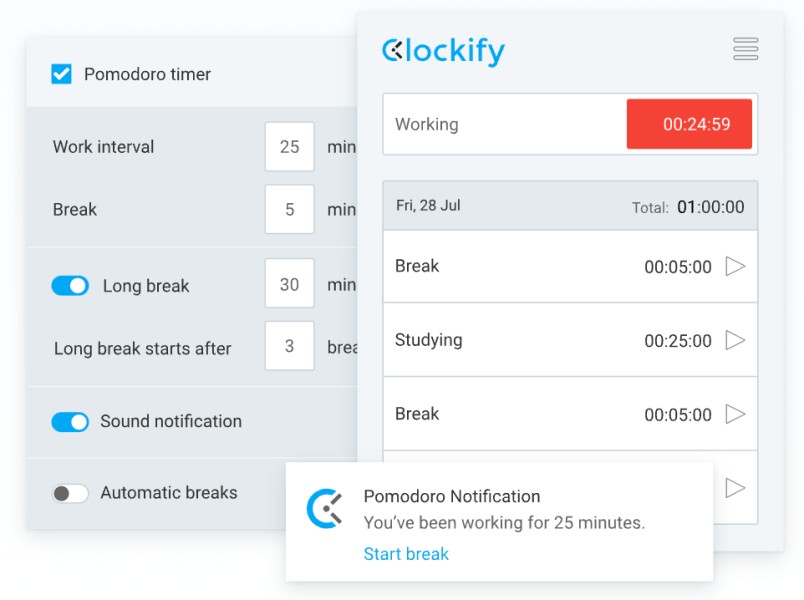
💡 Clockify Pro Tip
Interested in learning more about the great Pomodoro technique? Check out this blog post:
Tip #3: Schedule social media use
Just like with your phone, you can also set a schedule for when you’ll check your social media accounts.
Once the alarm on your Pomodoro timer goes off, use your designated break time to check your accounts before resuming work for another predefined session.
Tip #4: Keep your phone away
If you really want to avoid your phone, place it in a drawer, and lock it there for the duration of your work hours or for whatever time you want or need.
Tip #5: Use a website blocker
Website blockers allow you to create a blacklist of time-consuming websites. They’ll prevent you from entering specific websites you blacklisted for a period you choose.
Great solutions you can try include:
- StayFocusd (Chrome extension),
- Cold Turkey (macOS), and
- Freedom (macOS, Windows, Linux, iOS, Android, Chrome extension).
You can use either one to block Instagram, Facebook, Twitter, or any other website you visit too often.
Statistics on visual distractions
We’re visual beings, which means that we need a clean and distraction-free workspace to maintain our focus. Common visual distractions at the office include:
- Desk clutter,
- Crowded office space, and
- Colleagues eating nearby.
Let’s go over each of the visual distractions you might encounter while working to make sure you successfully ward them off.
Desk clutter
Having a lot of unnecessary paper, gadgets, and pens can potentially be detrimental to your performance at work.
Namely, the study published in the Princeton Neuroscience Institute and the above-mentioned Simon Fraser University study show that clutter can badly affect your ability to focus as well as your anxiety levels. It can trigger coping and avoidance strategies that make you seek other distractions, which only makes the problem worse.
Furthermore, a recent study published in Ergonomics showed that sharing a desk with a messy co-worker reflects poorly on work performance. Mainly, a shared, unclean desk will likely decrease a worker’s productivity. Research explains that the presence of too many visual stimuli in the workplace is extremely distracting.
Crowded office space
Unclean and crowded office space is just as bad as having an untidy desk, the same research from Ergonomics shows. Cluttered workplaces, in general, with papers everywhere, old coffee cups, and unemptied bins present a big distraction and can affect productivity.
However, even when completely clean, high-density workspaces can also add to the distraction at work. Researchers claim the main reasons for that lie in a higher cognitive overload and reduced psychological privacy.
A colleague eating nearby
Colleagues eating near you may seem like an unusual distraction, but its effect is undeniable. Imagine being hungry and trying to finish an important task before the deadline while the rest of your colleagues are enjoying their lunch break within your eyeshot.
Tips on how to handle visual distractions
A chaotic and cluttered workspace can only take your attention away from work and make you unproductive. Here are a couple of tips on handling visual distractions at work.
Tip #1: Declutter your desk
Research on Clutter, Chaos, and Overconsumption: The Role of Mind-Set in Stressful and Chaotic Food Environments showed that clearing clutter in the workplace enhances your ability to process information, thus directly increasing your productivity and improving your ability to focus.
So, get rid of old newspapers, project files, and broken paper clips, and organize the rest of what you want to keep neatly on your desk or in your drawers.
Tip #2: Take more frequent lunch and snack breaks
This may sound counterproductive, but taking more frequent breaks to eat helps you stay energized throughout the day. As a result, you’ll be able to focus better and stay productive longer.
What’s more, you won’t be bothered by other people eating near you quite so much.
If you have a lot of work to do and don’t think that you’d have time for a prolonged lunch break, having some nutritious snacks close at hand can help you avoid outbursts of hunger.
Tip #3: Create more space between desks
If you’re an employer looking to remove visual distractions in the workspace, creating more space between desks may be the key. That’s because more space creates a sense of visual privacy, which makes employees more relaxed and focused.
Statistics on internal distractions
Sometimes, your own personal thoughts and problems can distract you. This may be the case if you’re pressed down by fatigue, poor health, and personal problems.
Let’s go over some of the most common internal distractions and tips on how to handle them, so you’ll know exactly what to do in case you feel overwhelmed by them.
Dealing with fatigue
Just like you can’t properly focus when you’re hungry, you won’t be able to properly focus when you’re tired or not feeling well. The longer and faster you work to catch up with your work, the more tired you’ll be, and thus more likely to be distracted.
National Safety Council (NSC) reports that fatigue lowers an employee’s productivity rate by 66%.
In addition, a recent NSC report shows that the workplace can contribute to fatigue as 97% of employees have at least one fatigue risk factor at their place of work. Furthermore, 80% of workers deal with two or more risk factors at the workplace.
Coming to work sick
According to Theraflu, 62% of people in the US admit to coming to work while sick.
Coming to work when you’re not your best self will affect your focus and productivity. As a result, you may succumb to even more distractions — proving that distractions are a vicious cycle bound to repeat once you succumb to them.
This, again, leads to stress and frustration, which may directly lead you to overwork yourself to burnout. So, pushing through illness or ignoring it is never a good idea.
Personal problems and worries
Sometimes, you’ll have a personal crisis or a problem on your mind. This can be anything from an argument with your loved ones to financial issues you’re dealing with. In fact, 33% of employees state their personal financial issues present one of their biggest distractors.
This makes it harder for you to concentrate and easier for your mind to wander off your work tasks, even when you do establish some focus.
Struggling with mental health
Mental health is becoming an increasingly talked about topic, especially after the pandemic. More and more people struggle with their mental health, and it comes as no surprise that their struggles present a huge and dangerous distraction.
According to new research by Deloitte, 46% of Gen Zs feel anxious or stressed most of the time. Stress and anxiety affect mostly women, as 53% of the respondents who feel this way are females.
What’s more, 38% of millennials feel stress and anxiety most of the time. Out of them, 36% are men, and 41% are women.
Tips on how to handle internal distractions
Here are some of the things you can do at least temporarily to minimize internal distractions.
Tip #1: Take more breaks
By taking breaks for relaxation, you’ll recharge your batteries better. As a result, you’ll feel less tired and be less prone to diversions.
So, schedule regular 10-minute meditation breaks in your daily calendar, especially on the days when you know you have a lot of work to do.
Tip #2: Take some time off
If you’re sick, chances are you won’t be doing anyone (let alone yourself) a favor by insisting on coming to work. Instead, take a couple of days off to get better.
The same goes for time off in general — if you take a couple of days for a vacation, you’ll be better rested when you return to the office and, thus, less likely to fall prey to workplace distractions. This time off can also help you tackle the personal problems or worries you may have.
💡 Clockify Pro Tip
Are you confused about the difference between taking a day off and using your vacation days? Learn the main differences here:
Tip #3: Consult a medical professional
In case you’re unable to resolve your health issues, you may want to consider seeking professional help.
Regardless of whether you’re dealing with a physical health problem or a mental one, consulting a medical professional is essential for your long-term recovery.
Conclusion: Overcoming distractions is crucial for our productivity and success
Distractions are everywhere. They could come from the noise around you, a visual stimulus interrupting your work, or an internal issue that’s making you lose focus.
Regardless of the type of distraction you’re facing, it’s essential you take steps to remove it. That’s because recent workplace distractions statistics report that distraction-free work makes you:
- More engaged,
- More productive, and
- More satisfied with your job.
Luckily, our tips will help you deal with interruptions at your workplace easily and maintain complete focus on a task at hand in a matter of minutes!
✉️ Are you frequently distracted at work? How do you overcome such distractions? Write to us at blogfeedback@clockify.me to give us more insight into workplace distractions, and we may include your answer in this or future articles. Also, if you liked this article, be sure to spread the word to your friends and colleagues!
